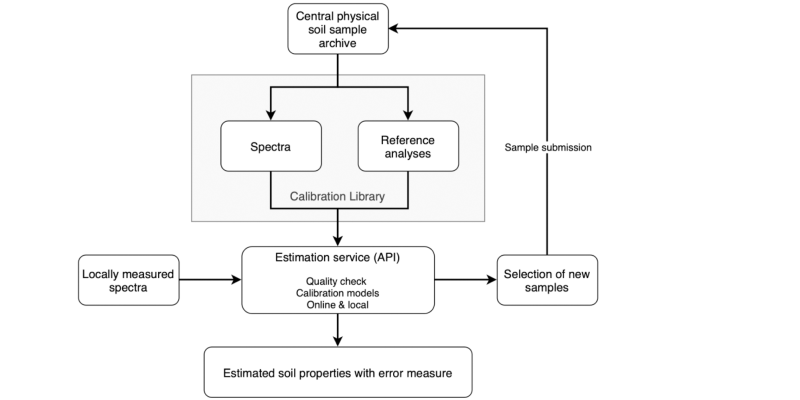New paper: A global soil spectral calibration library and estimation service
ISRIC - World Soil Information’s work on soil spectroscopy related to Global Soil Laboratory Network (GLOSOLAN) has resulted in a new paper published in Soil Security: “A global soil spectral calibration library and estimation service”, by Shepherd KD, Ferguson R, Hoover D, van Egmond F, Sanderman J and Ge Y. GLOSOLAN is the United Nations' Food and Agriculture Organization-supported Global Soil Partnership initiative on harmonisation and quality improvement of wet and dry chemistry lab methods.
Spectrally-derived data can be used for sustainable soil management and farm advice, for soil health monitoring and SOC MRV systems (monitoring, reporting and verification), as input to models, etc. Spectroscopy is cost effective, affordable and applicable on all soils, everywhere in a laboratory.
The paper discusses recent work towards making soil spectroscopy better available for many practitioners, land users and owners, regional and national governments, companies, NGO’s and other stakeholders.
Access the paper here: https://doi.org/10.1016/j.soisec.2022.100061
The paper proposes to adopt a high quality soil spectral library as a central, gold standard calibration library that can be extended to get even more global coverage. On top of this library, a soil spectral estimation service can be built. Users will be able to follow standardised measurement protocols to measure a soil sample's spectrum locally and, upon uploading to the estimation service, get an estimate of the soil properties for that sample.
The authors believe that the proposed setup can address several barriers to the widespread practical implementation and adoption of infrared spectroscopy as a laboratory technique and later as a proximal and remote sensing data acquisition technique. The current drawbacks of the approach include: 1) it is expensive to build a good quality soil spectral calibration library; not all laboratories or countries can afford that for a new method. 2) the quality of wet chemistry lab data is not always adequate to allow for reasonable spectral predictions. 3) standard operating procedures (SOP’s) in the laboratory are still under development, making spectral libraries less comparable, keeping in mind differences between wet chemistry laboratory data (Van Leeuwen et al, 2021). 4) it requires quite some expertise (and time) to do the spectral modelling required to translate from spectra to soil properties. And, although local spectral libraries generally outperform global soil spectral calibration libraries, a global library with localised spectral models is considered better than not being able to apply the technique at all.
The authors indicate that the evolving service can become a global public good which can support soil assessments globally, but especially in developing countries where soil data and resources for conventional soil analyses are most limited.
